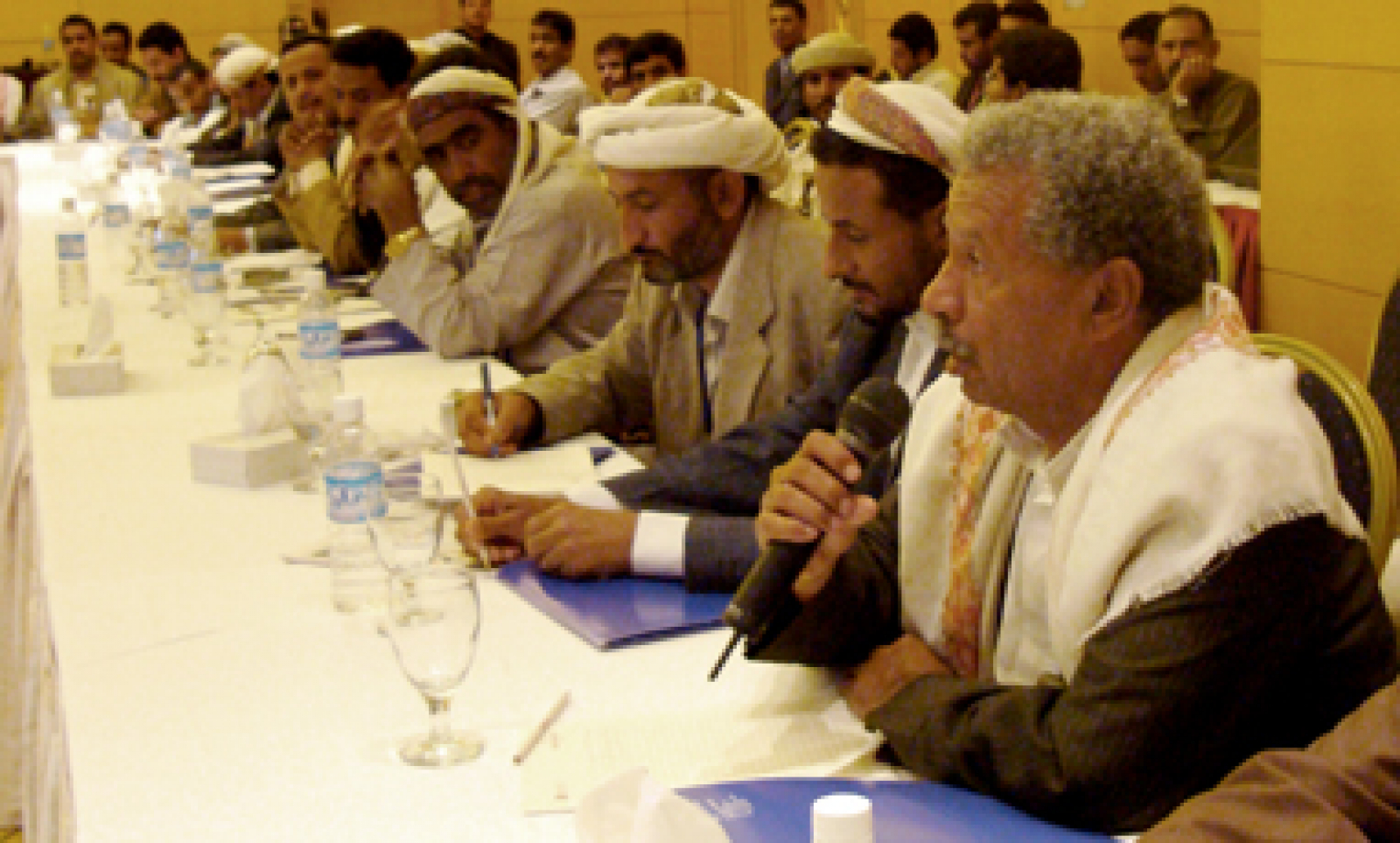
SHARE
The tribal violence that often erupts in remote areas of Yemen undermines order and government institutions and provides a haven for terrorist activity, poverty and illiteracy. These areas, vast and almost inaccessible, and the commonplace killings and hopelessness among populations stuck in a vortex of tribal conflict were characterized in a 2005 Pulitzer Prize winning series in The Washington Post.
The Post articles also focused on an NDI program that is seeking to help end tribal conflict and create optimism where none has existed. Working with tribal leaders, the Institute's program is aimed, among other things, at reducing the effects of violence on the education system and improving student safety. Lack of educational opportunity has taken its toll on Yemeni society. Frustrated, undereducated young people with no job prospects are among those most likely to engage in and perpetuate tribal violence.
The articles also focused on an NDI program that is endeavoring to help end the tribal conflict and create optimism where none has existed. Working with tribal leaders, the Institute’s program is aimed, among other things, at reducing the effects of violence on the education system and improving student safety. Lack of educational opportunity has taken its toll on Yemeni society. Frustrated, undereducated young people with no job prospects are among those most likely to engage in and perpetuate tribal violence.
The Institute’s program began in 2004, when a group of tribal sheiks from the governorates of Mareb, Al-Jawf and Shabwa came together to address the challenges. They organized a non-governmental organization (NGO) – the Yemen Organization for Development and Social Peace – and approached NDI for help in developing conflict resolution strategies that would end revenge killings and promote development in the country.
Addressing the impact of violence on education has become an urgent priority. Students from the Mareb, Al-Jawf and Shabwa governorates face enormous difficulty traveling to schools because they must cross unprotected into the territories of other tribes. In recent years, many students, teachers, school administrators and faculty were killed in the three governorates, a number of them while on their way to universities in Sanaa and Aden.
In May 2008, NDI helped a coalition of local NGOs, tribal and religious leaders, journalists and the Supreme National Committee for Addressing Revenge Killing Issues launch a public awareness campaign. The goal is to communicate ways to integrate traditional conflict prevention systems, such as respecting public places as “safe havens,” with modern techniques, such as using the media for advocacy and information sharing. Since the launch, the campaign organizers have conducted field surveys of students and educators affected by tribal violence, organized public meetings and events, and published weekly articles in national and local media on the effects of conflict on Yemen’s already weak educational system.
The campaign has also teamed with students to develop a code of conduct for tribal leaders that designates educational facilities as tribal violence free zones, or “safe havens.” Student peace convoys have been organized to travel to conflict areas in hopes of encouraging tribal and community leaders to sign the code. Key tribal leaders from the three governorates have already committed their support, urging fellow leaders to follow suit. The campaign has received additional commitments from influential figures at the national and local level, including elected representatives, community leaders, religious leaders and faculty members from local schools and colleges.
Furthering efforts to reduce and understand tribal violence, NDI has also assisted Mareb College and local NGOs to establish a regional center for tribal conflict research, where students will study the causes and nature of conflict in addition to receiving training in conflict resolution. The center is expected to open in early 2009.
Pictured Above: Prominent tribal leaders of Yemen at the launch of the public awareness campaign
–
Published on Dec. 4, 2008


